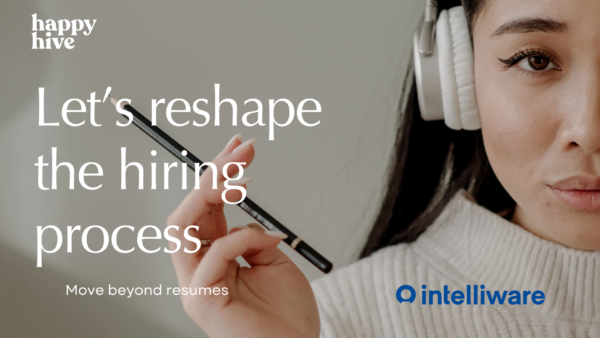Unchecked AI autonomy invites misaligned decisions, data misuse, and potential regulatory breaches. Giving agents a framework of rules and oversight transforms unstructured experiments into auditable operations that deliver measurable value. Treating autonomous models like interns who need clear assignments and supervision frames governance as a licence to scale responsibly rather than a barrier. Many technology leaders in highly regulated sectors already recognise the urgency – a recent survey found that 57% of investment adviser firms see AI usage as a top compliance concern and nearly half have increased testing, yet 44% have adopted tools without formal validation. This piece explores why agentic AI necessitates defined guardrails, how to effectively monitor and orchestrate them, and why a culture of accountability will distinguish those who succeed from those who stumble.
“Governance is putting those guardrails in front of the agents, making sure they're operating within their boundaries.”

How AI agents promise speed, but unchecked autonomy introduces risk
Automated agents execute tasks across everything from claims processing to supply‑chain optimisation. They promise speed by breaking large problems into smaller tasks, generating code or content, and calling external systems on behalf of a user. This level of autonomy can be a game-changer for regulated enterprises, which continually struggle with backlogs and resource bottlenecks. However, unsupervised agents can make misaligned decisions if they misinterpret business context, misuse data, or chain tasks in ways that breach policies. Regulators have noticed the risk: there are more than 1,000 AI policy initiatives across 69 countries. As jurisdictions roll out laws like the European Union’s Artificial Intelligence Act, which classifies AI applications by risk level and mandates transparency and accountability, ignoring governance will invite fines and reputational harm.
For business leaders, the tension is clear. Agents accelerate work, but autonomy without accountability is risky. To illustrate why guardrails matter, consider how quickly unchecked AI adoption can outpace controls. Research predicts that 40% of organisations in highly regulated industries will integrate data and AI governance by 2024, yet 75% of companies building DIY AI architectures will fall short of their objectives. In capital markets, almost 40% of firms have formally adopted AI tools for internal use cases and another quarter are exploring adoption. This momentum shows the appeal of speed but also reveals a governance gap: nearly half of these firms increased compliance testing while 44% implemented AI without formal validation. The risk multiplies when agents call each other across systems, share data incorrectly, or propagate bias.
AI agents also amplify existing data protection concerns. They may access personal information stored in customer relationship management (CRM) systems or financial ledgers, exposing sensitive records if not properly scoped. Agents trained on biased or incomplete data can produce discriminatory outcomes that breach equal‑treatment laws and harm trust. And because agents learn from feedback, their decision‑making can drift without continuous correction. These risks must be weighed against productivity gains. To harness the promise of autonomous systems without inviting harm, organisations need to treat agentic AI like any new workforce: give each agent a clear remit, define how data is used, and monitor performance. The next section digs into how dynamic oversight and continuous monitoring turn governance from a static checklist into an ongoing practice.
Dynamic oversight and continuous monitoring are non‑negotiable
Static policies cannot keep up with models that generate actions on the fly. Agents interpret input, generate intermediate tasks, and call other services, creating a cascade of decisions that cannot be fully anticipated at design time. Oversight therefore needs to evolve from periodic audits to continuous monitoring with feedback loops. The EU AI Act and similar regulations explicitly call for dynamic risk management across the AI life cycle, recognising that agentic systems act and evolve in real time. Continuous monitoring also addresses integration risks and accountability gaps by ensuring that external systems and vendors adhere to the same standards. Without such oversight, emergent behaviours can surface long after deployment, eroding trust and amplifying harm.
Why static policies fall short
Static controls assume models behave consistently, yet agents continuously adapt. They rewrite code, adjust workflows, and learn from feedback, which means a set‑and‑forget policy becomes outdated quickly. Even sophisticated testing cannot anticipate every scenario. As adoption scales, businesses risk death by a thousand cuts as minor deviations accumulate into significant compliance breaches. According to Forrester, spending on off‑the‑shelf AI governance software will quadruple to $15.8 billion by 2030 and account for 7% of all AI software spending; this surge is fuelled by demand for observability and transparency, underscoring that static approaches are insufficient.
Principles for dynamic oversight
Dynamic oversight treats governance as a living system rather than a one‑time configuration. It focuses on four principles:
- Real‑time visibility: use dashboards that track agent actions, data flows, and outcomes to spot anomalies immediately. This enables rapid remediation when agents deviate from policies.
- Feedback loops: integrate human review points where domain experts evaluate agent decisions and provide corrective guidance. Feedback ensures models stay aligned with evolving business rules and ethical norms.
- Risk grading: assign risk levels to agent behaviours and automate escalation workflows so that high‑impact actions trigger additional approvals or deeper audits.
- Continual learning: update policies and training datasets as new scenarios emerge, ensuring that governance remains relevant and effective.
- Cross‑functional collaboration: involve IT, compliance, legal, and business stakeholders in governance design to balance innovation with regulation.
Implementing these principles requires tools capable of capturing actions and applying analytics at scale. Monitoring should be integrated into existing service management processes rather than bolted on later. Enterprises may consider establishing dedicated oversight teams or “AI councils” that meet regularly to review metrics and adjust policies. While this may sound onerous, it saves time and money by catching issues early and preventing reputational damage.
Embedding monitoring in daily workflows
Continuous oversight must not be an afterthought; it needs to be embedded into the daily workflows of operators, developers, and risk managers. Logging agent actions is the starting point – logs should capture inputs, outputs, and decisions to provide a transparent trail for audits. Automated checks can flag anomalies, such as unusual data access patterns or repeated task failures, prompting human intervention. Integration with incident and change management systems ensures that when issues arise, they follow the same disciplined processes that govern other IT events. This approach aligns with IT service management (ITSM) best practices and meets the requirements of emerging regulations like the EU AI Act, which emphasises accountability and documentation. Dynamic oversight not only reduces risk but also builds trust by demonstrating that organisations are serious about responsible AI.

Orchestration and why enterprises need a control tower approach
As businesses experiment with multiple agents, complexity rises exponentially. One system may contain a content‑generation agent that calls a code‑writing agent, which in turn invokes a scheduling agent on a cloud platform. Without orchestration, these chains can become brittle, resulting in failures and inconsistent outcomes. A control tower approach centralises visibility and coordination, acting as a nerve centre that directs traffic, applies policies, and routes exceptions for human review. This concept is more than a tool; it represents a mindset of orchestrated operations where every agent, model, and workflow is understood and manageable.
Unified visibility across agents
Centralised orchestration provides a single view of all AI models and agents operating across an organisation. With an “AI control tower”, teams can see which agents are active, what tasks they are performing, and how they interact with other systems. This visibility allows leaders to stop or pause agent activity if risk thresholds are exceeded. ServiceNow describes its AI Control Tower as an agnostic hub that provides visibility for legal, compliance, IT, and business stakeholders and triggers remediation when issues like model drift or compliance gaps occur. Having a common dashboard eliminates guesswork and helps teams allocate resources efficiently.
Real‑time remediation and policy enforcement
Control towers are not just passive dashboards; they actively enforce policies and coordinate remediation. When an agent attempts to perform a task outside its remit – perhaps accessing restricted data or invoking an unapproved model – the control tower can block the action and notify the appropriate owner. This ensures that policies attached to agents are more than documents; they are executed automatically. Real‑time remediation also reduces downtime: when model drift is detected, the system can roll back to a previous version or route tasks to a backup agent, maintaining continuity. Such functionality increases confidence among regulators and executives alike, who want assurance that governance is not merely theoretical.
Integration across systems and clouds
Most enterprises operate a mix of on‑premises and cloud platforms. They might run machine learning models in one provider’s environment while calling external APIs hosted elsewhere. A control tower should span these boundaries, acting as an integration layer that orchestrates tasks across disparate systems. The ServiceNow AI Control Tower emphasises this neutrality by acting as an agnostic hub across different clouds and ensuring that innovation continues without sacrificing governance. With this approach, enterprises avoid vendor lock‑in and maintain flexibility, while still applying consistent policies and audit trails. Ultimately, orchestration reduces cognitive load for human operators; instead of manually tracing agent chains, they rely on automated workflows that manage dependencies and track compliance in real time.
“ServiceNow is essentially the control tower… it has all of that data in a centralized location and that's how they're able to make sure that your flight isn't delayed.”
Building a culture of trust and accountability in the agentic era
Technology alone cannot deliver responsible agentic AI; culture matters just as much. When new tools are deployed without a shared understanding of their purpose, training, and risks, adoption can create friction. A study from McKinsey highlights the “genAI paradox”: nearly eight in ten companies have adopted generative AI, yet most have not realised significant financial impact. One reason is that AI initiatives run in silos, disconnected from broader business processes and lacking clear accountability. To break the paradox, leaders must integrate agents into core workflows with transparency and human‑centred governance.
Trust begins with transparency. Teams need to know what each agent is doing, why decisions are made, and where data is used. Audit logs and reporting help demystify AI operations, allowing stakeholders to interrogate outcomes and spot errors. Accountability must also be shared: IT cannot manage AI in isolation. Compliance officers, legal advisers, and line‑of‑business owners should participate in designing policies and reviewing performance. This collective approach reflects the cross‑functional collaboration recommended for dynamic oversight and orchestrated operations.
A culture of accountability empowers staff to speak up when something feels wrong and encourages continuous improvement. Leaders can create incentives for ethical behaviour, such as recognising teams that identify and fix bias or build inclusive datasets. Organisations should also invest in upskilling – teaching employees how to work with agents, interpret outputs, and intervene when necessary. When people feel competent and supported, they are more likely to trust AI and use it effectively. Building this culture takes time, but the rewards are clear: greater productivity, better compliance, and improved decision quality.

Electric Mind: engineering governance into agentic AI
Extending a culture of trust into daily practice requires partners who combine technical rigour with pragmatic execution. Electric Mind approaches agentic AI governance with the same engineering‑led mindset that underpins regulated operations, ensuring that policies become operational reality rather than shelfware. Our multidisciplinary teams identify agents, attach risk‑appropriate policies, implement logging, integrate with ITSM processes, and orchestrate agent workflows, all while aligning with regulations like the EU AI Act. Because we work alongside your teams, we ensure governance aligns with business objectives rather than adding bureaucracy.
Our experience across finance, insurance, and transportation means we understand the unique compliance obligations and operational pressures of regulated industries. We build control tower architectures that provide real‑time visibility and remediation, enabling you to scale AI responsibly and with confidence. By combining strategy with engineering delivery, we help you turn ambitious ideas into systems that work today and evolve for tomorrow. Autonomy demands guardrails, and we provide the blueprint and hands‑on expertise to build them.
Orchestrated Oversight
In Electric Mindset – Season 1, Episode 5: ServiceNow: Now What?, Nick Dyment and Duke Osei bring this article’s ideas to life. They frame AI governance as control, not constraint—the guardrails that let agents act safely at scale. Duke compares ServiceNow’s orchestration to an airport control tower: agents are the planes, employees the pilots, and the orchestrator ensures every flight stays on schedule, within limits, and with full visibility.
Their discussion mirrors the blog’s pillars of dynamic oversight and orchestration—continuous monitoring, real-time remediation, and a unified view across systems. ServiceNow’s AI Control Tower becomes the example of how to manage autonomy without chaos, enforcing policy while keeping operations smooth.
Both the episode and this piece land on the same message: autonomy without governance isn’t innovation—it’s exposure. The future belongs to organisations that treat oversight as infrastructure, not overhead, turning trust and transparency into the foundation for scale.
Listen: Electric Mindset – Season 1, Episode 5: ServiceNow: Now What?
Common questions
Many business leaders and practitioners have similar questions about governing agentic AI. These concise responses offer clarity without repeating points from the main discussion and are structured for readability by search engines and language models. They focus on practical concerns such as policy design, orchestration, compliance, and audit logging.
How can regulated enterprises govern agentic AI?
Regulated enterprises should start by cataloguing all AI agents in use, including those embedded in third‑party platforms. For each agent, define a clear remit that outlines allowed tasks, data access rights, and escalation paths. Attach policies aligned with regulations such as the EU AI Act and industry standards like HIPAA (Health Insurance Portability and Accountability Act) or PSD2 (Payment Services Directive). Implement logging to capture inputs, outputs, and decision rationale, feeding this data into dashboards for continuous monitoring. Integrate governance into existing service management processes so that exceptions are handled through the same change and incident workflows as other IT systems.
What is an AI control tower?
An AI control tower is a centralised system that provides visibility and orchestration across multiple AI models and agents. It collects information on which agents are active, what tasks they are performing, and how they are interacting with other systems. Through policy enforcement and real‑time remediation, it can block or reroute actions when agents stray outside their remit. By spanning on‑premises and cloud environments, a control tower avoids vendor lock‑in while ensuring consistent governance. It also integrates with compliance tooling to provide audit trails and demonstrate adherence to regulatory requirements.
How do you orchestrate multiple AI agents across systems?
Effective orchestration starts with a clear map of interdependencies among agents and the systems they call. Use middleware or control tower platforms to manage task sequencing and data flows, ensuring that each agent receives the correct inputs and passes outputs to the right destination. Standardise interfaces so that agents communicate through defined APIs rather than ad hoc scripts. Set up policy checks that run before and after each task to confirm that actions comply with regulations and business rules. Monitor performance metrics continuously to detect drift, bottlenecks, or failures, and build automated failover strategies to maintain service continuity.
Why do logging and auditing AI agent actions matter?
Logging and auditing provide the backbone of accountability in AI operations. Detailed logs capture the context, inputs, outputs, and decisions of each agent, which is essential for investigating errors, resolving disputes, and demonstrating compliance. In regulated industries, auditors may require evidence that sensitive data was accessed and used appropriately; without logs, proving compliance becomes almost impossible. Audit trails also support continuous improvement by revealing patterns in agent behaviour that may indicate bias, drift, or inefficiency. Ultimately, comprehensive logging builds trust among stakeholders by showing that AI is not a black box but a transparent system open to scrutiny.
Continuous learning and transparent oversight are essential when deploying agentic AI in regulated sectors. Focusing on trust, accountability, and orchestration allows autonomous systems to deliver meaningful benefits while respecting privacy and compliance obligations. With the right guardrails in place, enterprises can harness the speed and creativity of AI agents to modernise operations, reduce costs, and unlock new opportunities.







